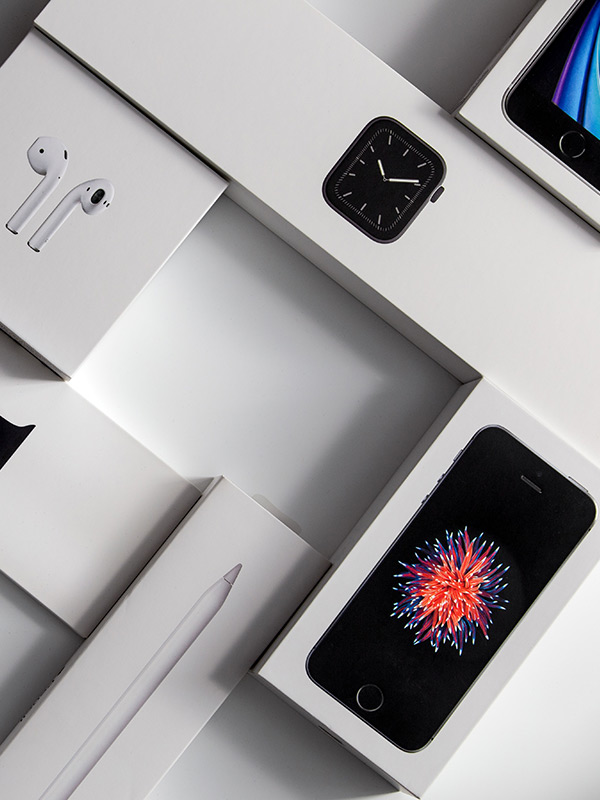Storytelling - An Essential Ingredient to the Human Experience. And Your Brand, Too.
Stories memorialize our past. Stories inspire our future. 17,000 years ago, prehistoric people came together in southwestern France to tell stories. Deep within a network of caves, early humans used charcoal and ochre to cover the walls with visual stories told through pictures of horses, bulls, and other animals now extinct. Known as the Lascaux Cave Paintings, these are the earliest known examples of humans setting down their experience for future generations. Though we can only guess at their meaning today, these ancient images tell us one thing for certain: we’ve been telling stories for thousands of years.
Sound and Story from Prehistory to Present
Storytelling is even older than the Lascaux Cave Paintings. For as long as we human(oids) could make sounds, we’ve told stories. From then right up to this moment, understanding that sound/story connection has been key to thriving in the world. Perhaps that’s why storytelling is an essential part of who we are — it’s woven deep into our DNA. We’re biologically engineered to respond to the sound of a good story. When we listen to one, our bodies produce cortisol, serotonin, and oxytocin. These chemicals don’t just make us feel good; they help us process stories and form memories. We’ve literally evolved so that well-told stories will leave a lasting impression. And as we’ve evolved, so have our stories and the ways we tell them. While I don’t need to tell you we’ve come a long way from painting on cave walls – it’s my story and I’m sticking to it.


Consider one of my favorite storytellers: David Attenborough. His unparalleled career — the activism, research, the media presence — has arguably done more for the environmental movement than the work of any other living person. When he started out though, most people didn’t own a TV. In the seventy years since, he’s learned and mastered a host of formats: radio, broadcast tv and film, streaming platforms, podcasts. For each one, he’s combined an impeccable sense of narrative and story structure to captivate audiences. As Simon Barnes once noted, “For Attenborough, the story was always the star.” While I agree, one can argue that the real star of that story is the sound of Attenborough’s voice. As soothing as it is convincing, Attenborough’s distinctive vocals are instantly recognizable and essential to his success. It’s no surprise that he’s won two Emmys, both for Outstanding Narrator. For me, there’s simply no one better at weaving information, education, entertainment and a point of view into a compelling narrative than Attenborough.
Great storytelling is just as important for brands as it is for documentarians or people swapping late night tales by a campfire. Few companies prove this better than Apple. Consider their iconic commercials, their product design, and even their sonic brand. Through the stories they tell, Apple has become far more than just a computer company – rather, they’re a brand equated with creativity, progress, even freedom. They accomplished this by telling compelling stories about the ways Apple could transform people’s lives. And they tell these stories well – creatively, intelligently, and emotionally. Perhaps subtly implying that storytelling through an Apple product will make the stories themselves that much more compelling. Steve Jobs understood this well. He once said “The most powerful person in the world is the storyteller. The storyteller sets the vision, values, and agenda of an entire generation that is to come.” No competitor could make this statement with as much authenticity.

Storytelling is Transforming Today
Now, storytelling is undergoing another transformation, taking us further from Lascaux into the future. Just as Attenborough has adapted to evolving media formats throughout his career, brands need to embrace new technology to connect with their audiences and share their stories as effectively as possible. Like Apple, they have to keep their eyes on the horizon to anticipate what’s coming.
Here’s why.
 The pandemic has rapidly accelerated the world’s advance into the screenless world. After spending the past year trapped in Zooms and Webexes and the like, more than 70% of Americans report screen fatigue1. That’s more than two thirds of a brand’s total audience! And as previously discussed, humans have evolved. The market has seen a huge uptick in smart speaker sales: over 150 million units were sold last year2. Wireless earbuds also experienced a rapid increase in purchase last year, showing a 90% increase in global shipments3. More generally, and more importantly, screen fatigue is actively driving people away from old, linear screen-based media towards digital audio. Last summer, audio listenership rose while people actually spent less time watching TV or scrolling through social media on their phones4. The audio renaissance is real, people!
The pandemic has rapidly accelerated the world’s advance into the screenless world. After spending the past year trapped in Zooms and Webexes and the like, more than 70% of Americans report screen fatigue1. That’s more than two thirds of a brand’s total audience! And as previously discussed, humans have evolved. The market has seen a huge uptick in smart speaker sales: over 150 million units were sold last year2. Wireless earbuds also experienced a rapid increase in purchase last year, showing a 90% increase in global shipments3. More generally, and more importantly, screen fatigue is actively driving people away from old, linear screen-based media towards digital audio. Last summer, audio listenership rose while people actually spent less time watching TV or scrolling through social media on their phones4. The audio renaissance is real, people!
These changes require marketers to embrace a more holistic understanding of media. As different platforms converge in the screenless world — digital audio played in the car, podcasts streamed over smart devices, sports, news and every moment that matters consumed live and on-demand — you can’t think about your brand narrative strictly in terms of TV commercials, display ads, or radio spots. Instead, you have to consider an overarching story, one that layers narrative with sound, visuals, and technology to use each touchpoint to its maximum potential.
Importantly, now more than ever, no matter what form your story takes, it must feature audio. That’s not just because the future is screenless, either. It’s because story and sound have been inextricably linked in our brains for millenia. The best marketers know this and consider the emotionally induced responses that audio stimulates as much as, if not more than, demographics, day parts, and personas as they craft their strategies.
The Three Parts of a Good Story
That said, even if you have the right mix of media and an audio-centric strategy, you still need a good story to tell. And if you want your brand to tell a compelling story in the modern age, you have to return to a story’s most basic elements. I’d like to highlight three of them.
First off, all good stories have a main character, a hero. Joseph Campbell, author, critic, and mythology scholar famously argued that hero narratives are the oldest and most powerful stories we can tell. For brands, the hero should always be your customer. Heroes always have a cause worth fighting for. What’s important to them? What do they need? How can you help them? By making your customer the hero of your brand’s story, you can involve them more deeply and more centrally in whatever it is you want to tell.
Second, all stories have conflict, a problem the hero needs to solve. This is the engine of plot — everything that happens in your story. What problem does your product or service fix? What change does your brand seek to make in the world? These questions can help you identify the conflict at the heart of your story.
Lastly, good stories leave us with a larger takeaway when they’re done — a theme. Here you should consider your brand’s values. Determine what’s truly important to your brand. Maybe, like Attenborough, you’re passionate about the environment, or, like Apple, relentless innovation. The leading brands in every category know that their brand’s values are a super power that can help heroes be heroes. Whatever your theme is, tell your story so well that your customer will believe in it as much as you do.
Keep all this in mind when you tell your story. Literally tell it, give it a voice. Then you are biologically guaranteed to leave a mark on your listener. Media is converging on audio more rapidly each month, but that’s ultimately a great opportunity for brands and storytellers from all walks of life. Good stories are integral to our humanity, and they’re better when we share them out loud. I’m looking forward to hearing yours.
Want to talk more about reaching your target audience?
Let´s Talk1 https://www.mediapost.com/publications/article/363847/magna-teams-with-spotify-finds-americans-suffer-f.html?utm_source=newsletter&utm_medium=email&utm_content=headline&utm_campaign=122560&hashid=Z4EB82OjVYRSWkviIsqLqqsEfTM
2 https://www.businesswire.com/news/home/20210303005852/en/Strategy-Analytics-Global-Smart-Speaker-Sales-Cross-150-Million-Units-for-2020-Following-Robust-Q4-Demand
3 https://9to5mac.com/2021/01/27/airpods-dominate-wireless-headphone-market/
4 Audio Amplification: Defining Engaged Impressinos Study, Audacy and Alter Agents, 2020
